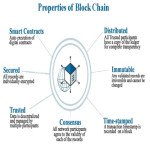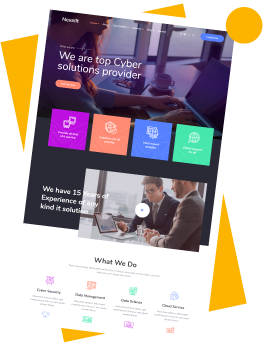The most commonly used IoT devices
span various industries, including consumer, industrial, healthcare, and smart
cities. These devices are typically connected to the internet and communicate
data, allowing for automation, monitoring, and enhanced control. Here’s a list
of the most widely used IoT devices:
1.
Smart Home Devices
- Smart Thermostats:
Devices like Nest and Ecobee allow users to remotely control
home temperature and monitor energy consumption.
- Smart Security Cameras: Products like Ring, Arlo, and Google
Nest cameras provide real-time surveillance with motion detection and
remote viewing.
- Smart Lights:
Devices like Philips Hue and LIFX enable remote control of
lighting, automation based on schedules, and energy efficiency.
- Smart Locks:
Devices like August Smart Lock and Yale Smart Lock allow
remote locking/unlocking of doors and provide access logs.
- Voice Assistants:
Devices such as Amazon Echo (with Alexa), Google Home, and Apple
HomePod control other smart home devices using voice commands.
2.
Wearables
- Smartwatches:
Devices like Apple Watch, Fitbit, and Samsung Galaxy
Watch track health metrics, notifications, and fitness activity.
- Fitness Trackers:
Devices like Fitbit and Xiaomi Mi Band track physical
activity, heart rate, and sleep patterns.
- Smart Glasses:
Products like Google Glass or Snapchat Spectacles provide
augmented reality (AR) features and hands-free access to information.
3.
Connected Vehicles
- Telematics Devices:
IoT devices used in cars to collect data about vehicle health, fuel
efficiency, and driver behavior. Examples include Geotab and Verizon
Connect.
- Autonomous Cars:
Vehicles equipped with IoT sensors for navigation and control, like Tesla's
Autopilot and Waymo self-driving cars.
- Vehicle-to-Everything (V2X) Communication: IoT technology that enables cars to communicate with
each other, road infrastructure, and pedestrians.
4.
Industrial IoT (IIoT) Devices
- Industrial Sensors:
Devices that monitor machinery, production lines, and environmental
conditions in industries like manufacturing, oil & gas, and logistics.
Examples include temperature, pressure, and vibration sensors.
- Predictive Maintenance Sensors: IoT devices used to predict equipment failure by
monitoring vibrations, temperature, and usage patterns (e.g., Siemens
MindSphere).
- SCADA Systems:
Supervisory Control and Data Acquisition systems that gather and analyze
real-time data from industrial equipment (e.g., Rockwell Automation,
GE Predix).
5.
Healthcare Devices (IoMT - Internet of Medical Things)
- Wearable Health Monitors: Devices like Fitbit Health Solutions or Apple
HealthKit measure vital signs, activity, and health metrics (e.g.,
heart rate, blood pressure).
- Connected Medical Devices: Examples include smart insulin pumps, continuous
glucose monitors (CGMs) (e.g., Dexcom), and remote patient
monitoring devices that allow healthcare providers to monitor patients
in real time.
- Smart Pill Bottles:
Devices like AdhereTech help ensure medication adherence by
alerting users and tracking when they take their medication.
6.
Smart Cities and Infrastructure
- Smart Traffic Lights:
IoT sensors are used to monitor and control traffic flows, optimize
traffic signals, and reduce congestion (e.g., Siemens Mobility).
- Smart Parking:
Systems that detect available parking spaces and provide real-time updates
to drivers (e.g., ParkMobile).
- Smart Meters:
Devices used by utility companies to measure electricity, gas, and water
consumption in real time (e.g., Itron, Siemens).
- Public Surveillance Systems: Smart cameras with AI-based analytics used to monitor
public safety and crowd control.
7.
Agricultural IoT Devices
- Smart Irrigation Systems: Devices like CropX and Netafim that use
sensors to monitor soil moisture and automatically adjust water usage for
crops.
- Drones:
Used for monitoring crop health, livestock management, and land surveying.
- Livestock Monitoring Devices: Devices that track health metrics and location of
livestock, improving farm management.
8.
Retail and Supply Chain IoT
- Smart Shelves:
Devices that use RFID tags and weight sensors to monitor stock levels in
retail stores, automatically reordering products when necessary (e.g., Zebra
Technologies).
- Inventory Trackers:
IoT-enabled devices that track the movement of goods in warehouses and
throughout the supply chain, often combined with RFID and GPS technology.
- Contactless Payment Systems: Devices like Square and NFC-based terminals
for mobile payment systems (e.g., Apple Pay, Google Pay).
9.
Environmental Monitoring Devices
- Air Quality Sensors:
Devices that measure air quality in urban areas, providing data on
pollution levels and weather conditions (e.g., BreezoMeter).
- Water Quality Monitors: IoT sensors used to monitor water conditions in
rivers, oceans, or water supplies (e.g., Libelium).
10.
Smart Grid Devices
- Smart Meters:
Used by utilities to monitor electricity usage and allow for dynamic
pricing and efficient distribution.
- Distributed Energy Resources (DERs): IoT-enabled systems that manage solar panels, wind
turbines, and battery storage, ensuring efficient energy generation and consumption.
Conclusion
The IoT ecosystem continues to grow
rapidly, with devices becoming more interconnected across industries. These
devices provide data and automation that improve efficiency, convenience, and
safety. In the future, IoT will further expand into sectors like healthcare,
industrial automation, and smart cities.
The most commonly used IoT devices span various industries, including
consumer, industrial, healthcare, and smart cities. These devices are typically
connected to the internet and communicate data, allowing for automation,
monitoring, and enhanced control. Here’s a list of the most widely used IoT
devices:
1. Smart Home Devices
- Smart Thermostats: Devices
like Nest and Ecobee allow users to
remotely control home temperature and monitor energy consumption.
- Smart Security Cameras:
Products like Ring,
Arlo, and Google Nest cameras
provide real-time surveillance with motion detection and remote viewing.
- Smart Lights: Devices like
Philips Hue and LIFX enable remote control
of lighting, automation based on schedules, and energy efficiency.
- Smart Locks: Devices like August Smart Lock and Yale Smart Lock allow
remote locking/unlocking of doors and provide access logs.
- Voice Assistants: Devices
such as Amazon
Echo (with Alexa), Google
Home, and Apple
HomePod control other smart home devices using voice
commands.
2. Wearables
- Smartwatches: Devices like
Apple Watch, Fitbit, and Samsung Galaxy Watch track
health metrics, notifications, and fitness activity.
- Fitness Trackers: Devices
like Fitbit and Xiaomi Mi Band track
physical activity, heart rate, and sleep patterns.
- Smart Glasses: Products
like Google Glass or Snapchat Spectacles
provide augmented reality (AR) features and hands-free access to
information.
3. Connected Vehicles
- Telematics Devices: IoT
devices used in cars to collect data about vehicle health, fuel
efficiency, and driver behavior. Examples include Geotab and Verizon Connect.
- Autonomous Cars: Vehicles
equipped with IoT sensors for navigation and control, like Tesla's Autopilot and Waymo self-driving cars.
- Vehicle-to-Everything (V2X) Communication:
IoT technology that enables cars to communicate with each other, road
infrastructure, and pedestrians.
4. Industrial IoT (IIoT) Devices
- Industrial Sensors:
Devices that monitor machinery, production lines, and environmental
conditions in industries like manufacturing, oil & gas, and logistics.
Examples include temperature, pressure, and vibration sensors.
- Predictive Maintenance Sensors:
IoT devices used to predict equipment failure by monitoring vibrations,
temperature, and usage patterns (e.g., Siemens MindSphere).
- SCADA Systems: Supervisory
Control and Data Acquisition systems that gather and analyze real-time
data from industrial equipment (e.g., Rockwell Automation, GE Predix).
5. Healthcare Devices (IoMT - Internet of Medical Things)
- Wearable Health Monitors:
Devices like Fitbit
Health Solutions or Apple
HealthKit measure vital signs, activity, and health
metrics (e.g., heart rate, blood pressure).
- Connected Medical Devices:
Examples include smart
insulin pumps, continuous
glucose monitors (CGMs) (e.g., Dexcom), and remote patient monitoring devices
that allow healthcare providers to monitor patients in real time.
- Smart Pill Bottles:
Devices like AdhereTech
help ensure medication adherence by alerting users and tracking when they
take their medication.
6. Smart Cities and Infrastructure
- Smart Traffic Lights: IoT
sensors are used to monitor and control traffic flows, optimize traffic
signals, and reduce congestion (e.g., Siemens Mobility).
- Smart Parking: Systems
that detect available parking spaces and provide real-time updates to
drivers (e.g., ParkMobile).
- Smart Meters: Devices used
by utility companies to measure electricity, gas, and water consumption in
real time (e.g., Itron,
Siemens).
- Public Surveillance Systems:
Smart cameras with AI-based analytics used to monitor public safety and
crowd control.
7. Agricultural IoT Devices
- Smart Irrigation Systems:
Devices like CropX
and Netafim that use sensors
to monitor soil moisture and automatically adjust water usage for crops.
- Drones: Used for
monitoring crop health, livestock management, and land surveying.
- Livestock Monitoring Devices:
Devices that track health metrics and location of livestock, improving
farm management.
8. Retail and Supply Chain IoT
- Smart Shelves: Devices
that use RFID tags and weight sensors to monitor stock levels in retail
stores, automatically reordering products when necessary (e.g., Zebra Technologies).
- Inventory Trackers:
IoT-enabled devices that track the movement of goods in warehouses and
throughout the supply chain, often combined with RFID and GPS technology.
- Contactless Payment Systems:
Devices like Square
and NFC-based terminals for
mobile payment systems (e.g., Apple
Pay, Google
Pay).
9. Environmental Monitoring Devices
- Air Quality Sensors:
Devices that measure air quality in urban areas, providing data on
pollution levels and weather conditions (e.g., BreezoMeter).
- Water Quality Monitors:
IoT sensors used to monitor water conditions in rivers, oceans, or water
supplies (e.g., Libelium).
10. Smart Grid Devices
- Smart Meters: Used by
utilities to monitor electricity usage and allow for dynamic pricing and
efficient distribution.
- Distributed Energy Resources (DERs):
IoT-enabled systems that manage solar panels, wind turbines, and battery
storage, ensuring efficient energy generation and consumption.
Conclusion
The IoT ecosystem continues to grow rapidly, with devices becoming more
interconnected across industries. These devices provide data and automation
that improve efficiency, convenience, and safety. In the future, IoT will
further expand into sectors like healthcare, industrial automation, and smart
cities.








